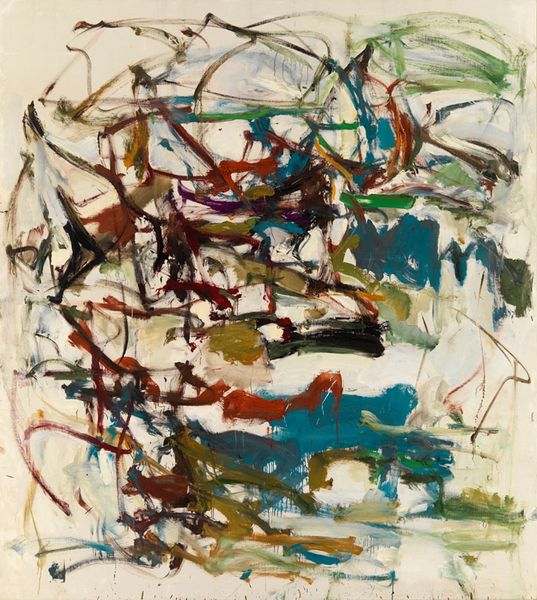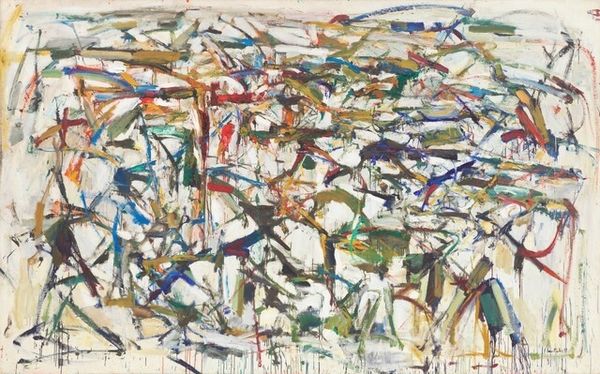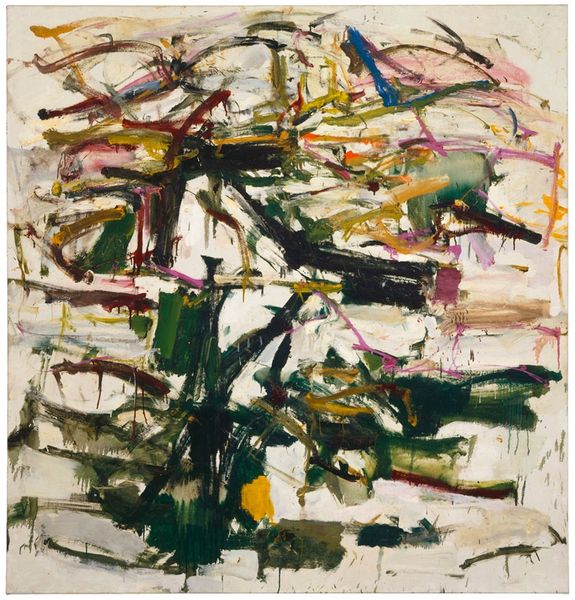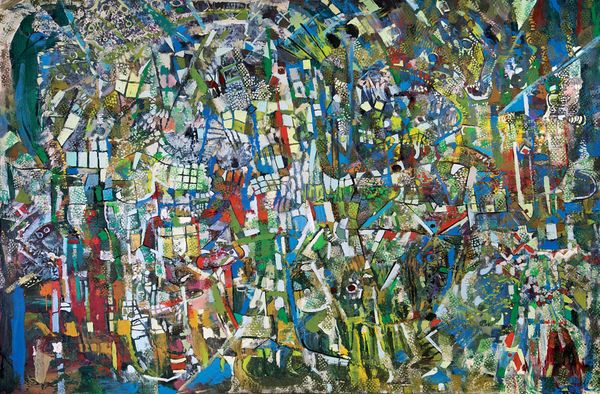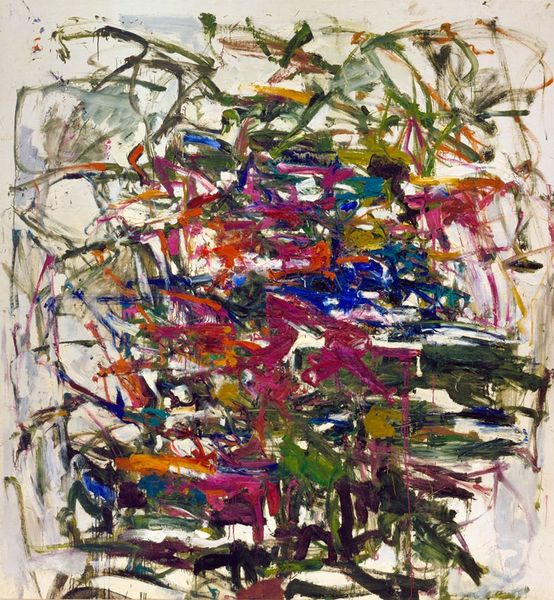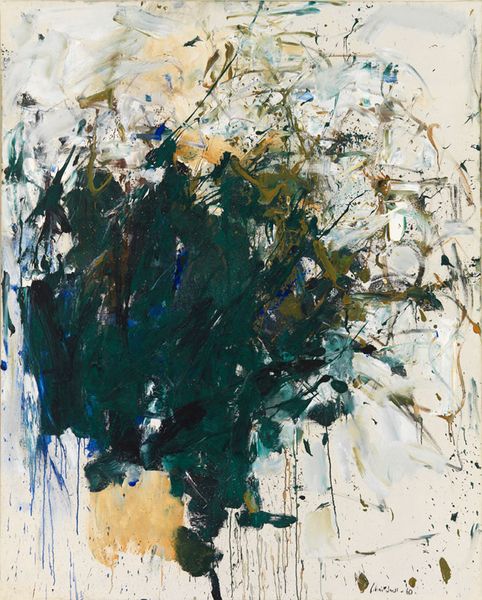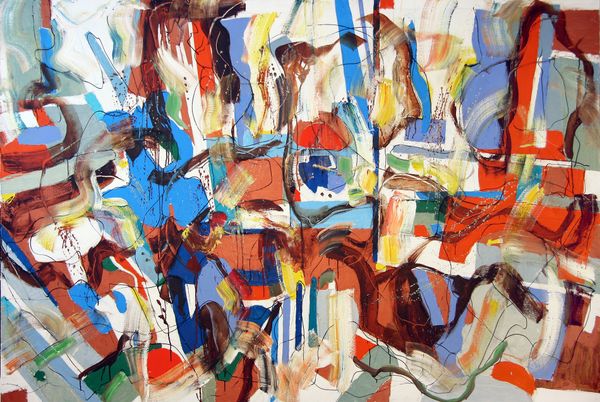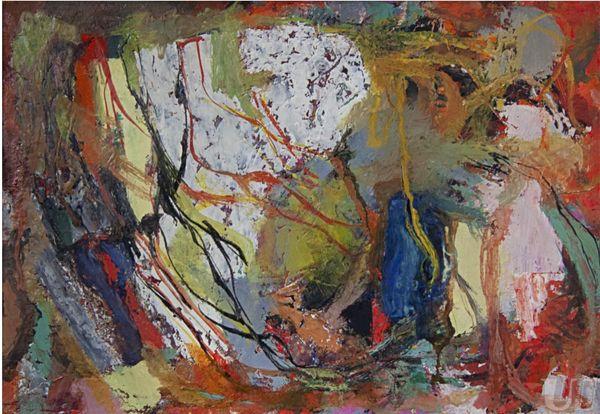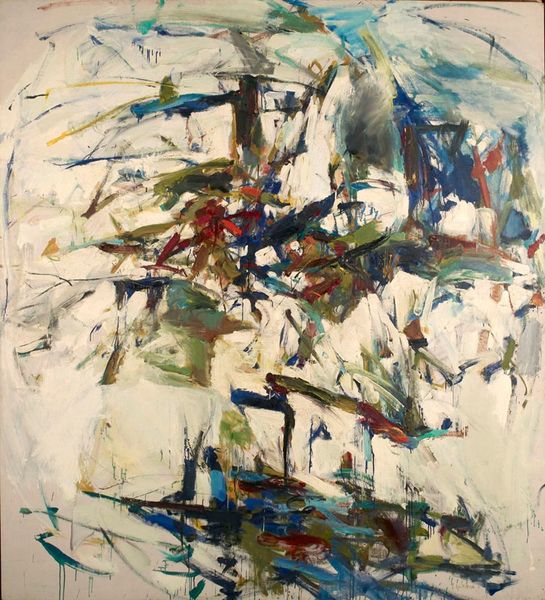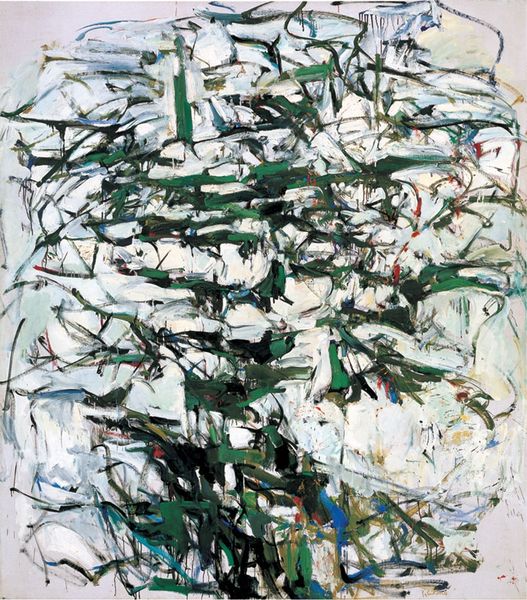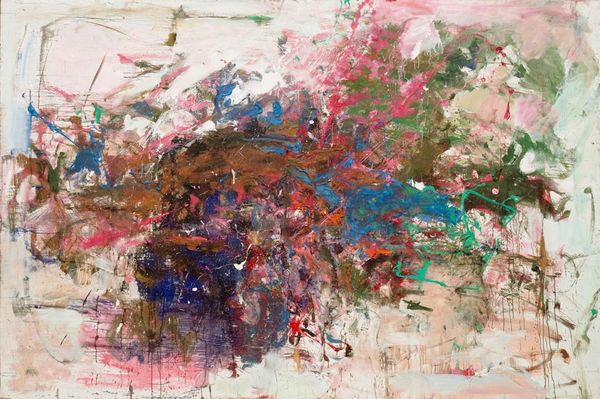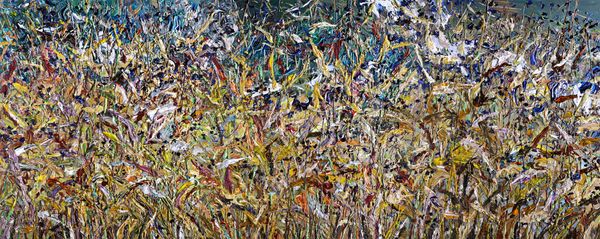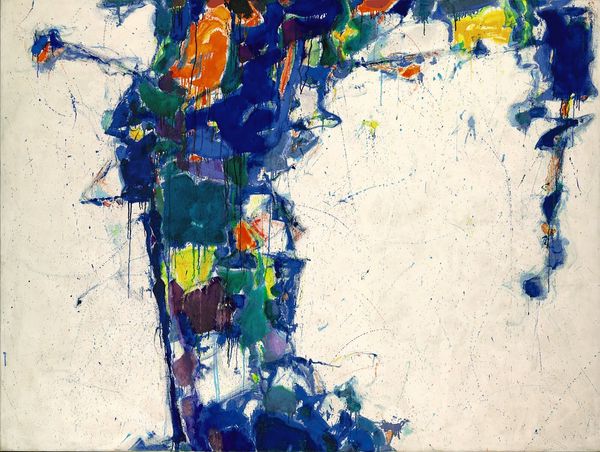
acrylic-paint
#
abstract-expressionism
#
abstract expressionism
#
landscape
#
acrylic-paint
#
acrylic on canvas
#
abstraction
Dimensions: 197.9 x 274 cm
Copyright: Joan Mitchell,Fair Use
Curator: Welcome. We're looking at Joan Mitchell’s "Ladybug," painted in 1957, using acrylic on canvas. What’s your first impression? Editor: Chaos, yet strangely organized. I see dynamic, almost violent brushstrokes layered against this stark white canvas. It feels unresolved, caught in a perpetual state of becoming. Curator: Mitchell, during this period, was deeply engaged in the Abstract Expressionist movement, influenced by artists like Pollock and de Kooning, who redefined art’s social role as less mimetic and more performative. Editor: Performative, yes, absolutely! There is a performative nature present. Note the layering, building up textures but letting each colour maintain its individual intensity and impact—that expressive power speaks volumes. Curator: The title "Ladybug," while seemingly simple, creates an interesting tension, because the image doesn’t easily lend itself to obvious natural referents. One wonders about the title’s connection to Mitchell’s broader views on women and the art world at the time. Editor: Hmm, true—the abstraction feels disconnected to that sort of imagery, yet it creates an intriguing visual contrast, playing with our perception. I love how she juxtaposes lighter hues with deeper blues and reds—an intense spatial push and pull! Curator: Consider too, her position as a woman in a male-dominated art scene. Her gesture was to paint with as much force and assertion as any of her male counterparts, to make her own unique statement. Editor: Yes, that makes me think of what sounds like a defiance! She refuses to conform—or resolve completely. Her brushwork is so free—and this is an acrylic, right? It lets her work so intensely on this large canvas. It almost feels like the gestures come from the whole body, an unfurling in motion! Curator: Precisely. Understanding her social positioning helps unlock another layer of understanding. The emotional weight feels less abstract when situated in its time. Editor: Agreed. This really allows me to consider abstract art not simply as a collection of aesthetic choices, but, in a sense, the artist wrestling with their place in the world and what that place offers in response. Curator: Thank you, this piece truly showcases not only Mitchell’s artistic choices but offers much information about the cultural contexts that fostered such expression.
Comments
No comments
Be the first to comment and join the conversation on the ultimate creative platform.
